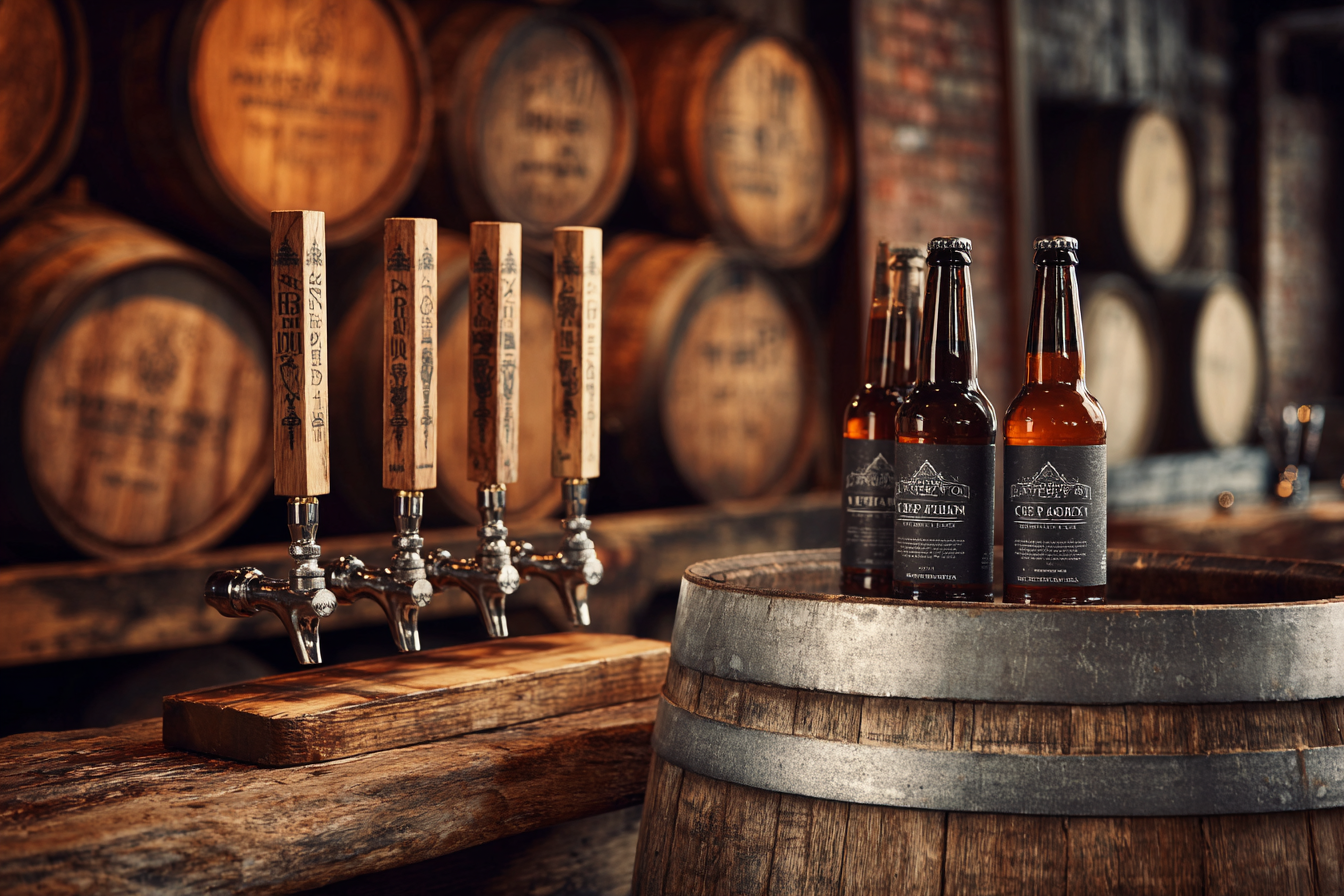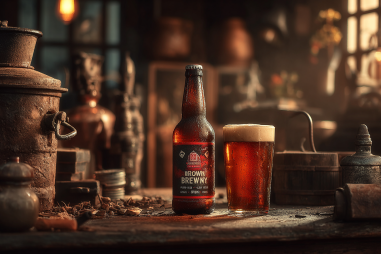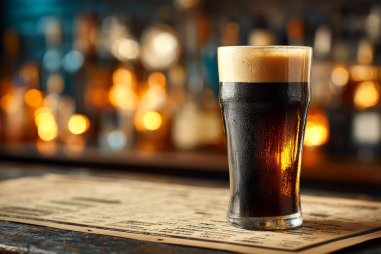New England IPA, often affectionately known as NEIPA, is a beer style that has taken the craft beer world by storm. Characterized by its hazy appearance, juicy flavor, and low bitterness, it offers a refreshing twist on the traditional IPA. Originating from the northeastern United States, this style reflects a culture of innovation and experimentation that transformed the way brewers and drinkers experience India Pale Ales.
Early Craft Beer Scene in New England
The craft beer movement in New England began gaining momentum in the late 1980s and early 1990s, laying the foundation for what would later become a thriving regional industry. Early breweries like Samuel Adams, Harpoon Brewing, and Vermont’s Magic Hat established a reputation for quality and creativity, inspiring a new generation of brewers. This environment encouraged experimentation, setting the stage for the development of novel beer styles.
At the time, IPAs were typically known for their clear, amber color and assertive bitterness, a style popularized by West Coast breweries. However, in New England, brewers sought to break away from this norm, exploring alternative hop varieties and brewing techniques that would stand out from the crowd and better suit the local palate that favored fruit-forward and less aggressive beers.
Origin Stories: Key Brewers and Breweries
The exact origin of New England IPA is often debated among beer enthusiasts, but several key figures and breweries are widely credited with pioneering the style. One of the seminal pioneers was John Kimmich, brewmaster of Vermont’s The Alchemist. His brewery’s flagship beer, Heady Topper, launched in the early 2000s, became famous for its hazy, intensely aromatic character and juicy hop profile. Heady Topper helped popularize what was then an unconventional take on the IPA.
Other notable contributors include Trillium Brewing Company and Tree House Brewing Company based in Massachusetts. These breweries capitalized on the trend toward haziness and softer bitterness, establishing consistent recipes that highlighted tropical fruit hop flavors and a soft mouthfeel. Their success elevated the style into a regional identity, cementing NEIPA’s place in the craft beer canon.
Evolution of Brewing Techniques Leading to the Style
NEIPA’s distinct characteristics did not just happen by chance—they are the result of deliberate brewing innovation. Brewers began to experiment with a variety of techniques to achieve the signature haze and juicy flavor. These include:
- Use of high-protein grains such as oats and wheat, which add body and contribute to the beer’s hazy appearance.
- Increased use of late-hop additions and dry hopping during fermentation to maximize aroma and flavor while minimizing bitterness.
- Implementing a “hop bursting” technique where large quantities of hops are added late in the boil or after fermentation.
- Softening water profiles by reducing sulfate levels, which usually bring out bitterness, in favor of chloride to emphasize malt sweetness and fullness.
These brewing methods combined to create beers that were smooth, aromatic, and visually distinctive, breaking the mold of what an IPA could be.
Defining Characteristics Developed Over Time
As the style matured, certain elements became hallmarks of the New England IPA:
- Appearance: Unlike the clear golden or amber IPAs, NEIPAs are unmistakably hazy or cloudy — often described as “juicy” or “milky.” This haze comes from yeast in suspension, proteins from grains like oats, and hop resins.
- Flavor Profile: The hops impart prominent tropical fruit, citrus, and stone fruit aromas with little to no lingering bitterness. The juiciness often evokes flavors like mango, pineapple, and orange.
- Mouthfeel: NEIPAs tend to have a smoother, creamier mouthfeel compared to other IPAs, due in part to the use of oats and wheat malt.
- Bitterness: Unlike more aggressive IPAs, New England IPAs are moderately bitter or even low bitterness, placing emphasis on hop flavor and aroma instead.
The interplay of these factors creates a beer that is both approachable to newcomers and complex enough to satisfy experienced craft beer drinkers.
Popularity Growth and Cultural Impact
Since its inception, the New England IPA style has seen explosive growth, expanding far beyond the borders of the northeastern U.S. As craft beer enthusiasts spread the word, breweries across the country and even internationally began producing their own versions. NEIPA’s crowd-pleasing flavor profile resonated with drinkers looking for something different from the hoppier and drier West Coast IPA style.
The style also cultivated a unique community culture. Taprooms and beer festivals across New England and beyond often showcase multiple NEIPAs, highlighting the diversity within the style. Social media helped propel the craze by allowing brewers and fans to share beer photos, recipes, and tasting notes, fueling curiosity and experimentation. Moreover, the style’s emphasis on freshness and hop quality has influenced supply chains, hop farming, and even packaging innovations like nitrogen-charged cans to preserve aroma.
Current Trends and Future Outlook
Today, the New England IPA continues to evolve. While the original style focused on haze and juiciness, brewers are pushing boundaries with variations such as:
- Double and Triple NEIPAs: These beers amplify hop intensity and malt presence for more robust flavors.
- Mixed Fermentation NEIPAs: Combining NEIPA haze with sour or funky yeast strains for unique twists.
- Low-Alcohol and Session Versions: Catering to drinkers seeking the juicy flavors at lower alcohol levels.
- Sour and Fruit-Infused NEIPAs: Incorporating fruit additions or lactobacillus for sour complexity alongside classic haze.
Furthermore, sustainability and local sourcing have become priorities for many New England breweries, influencing recipe development and ingredient use. Urban breweries are embracing NEIPA as a flagship style while smaller craft houses are blending it with regional flavors and techniques, keeping the style fresh and relevant.
Honoring the Legacy of New England IPA
The New England IPA stands as a testament to the power of creativity and regional identity in craft brewing. Born from the bold ideas and relentless experimentation of brewers in the northeastern United States, it challenged conventional IPA norms and redefined what beer drinkers could expect. Its hazy, juicy character offers an inviting gateway for new beer enthusiasts, while its depth and complexity provide endless fascination for seasoned drinkers.
As the style continues to inspire brewers worldwide, its legacy is not just in its unique flavor profile or cloudy look but in its spirit of innovation and community. The New England IPA’s story reminds us that great beer is as much about culture and connection as it is about ingredients and technique, inviting everyone to share in its evolving haze-filled journey.







